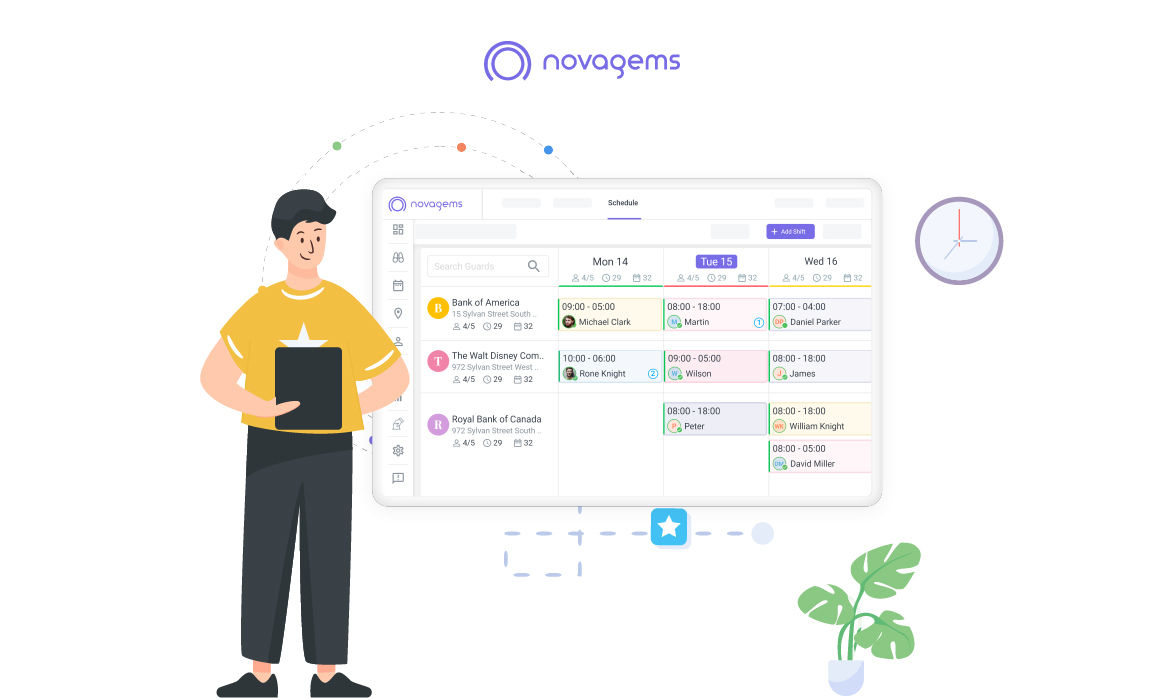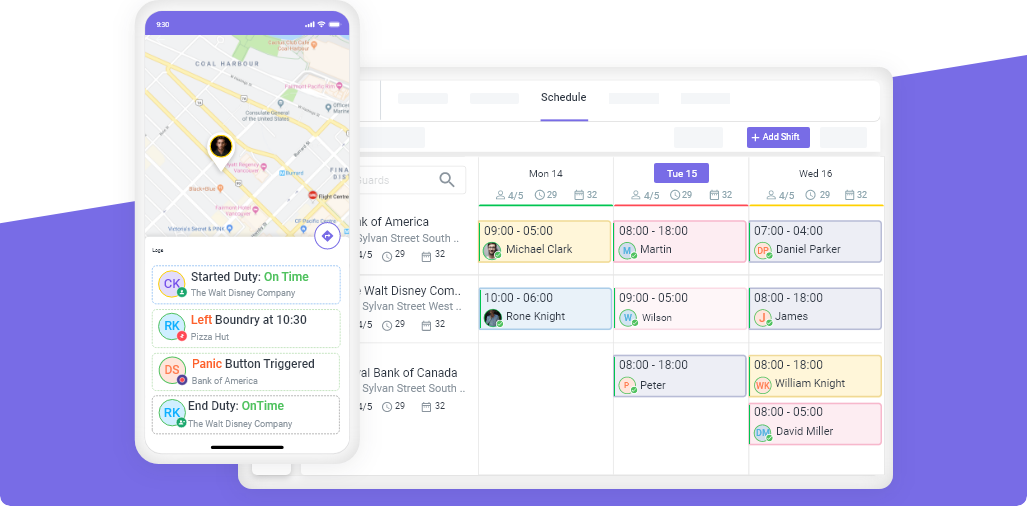Managing The Challenges Of Scheduling Employees
Mon, Jul 17, 2023
Read in 5 minutes
Scheduling employees can be a unique challenge for managers due to the varying schedules and commitments of college. It is, however, possible to manage a team of employees effectively with careful planning and flexibility.

The Challenges Of Scheduling Employees
Effective employee scheduling is crucial for any business’s smooth operation, but it comes with its fair share of challenges. From juggling varying shift preferences to maintaining a balanced workload, managing employee schedules can be a daunting task. In this blog, we’ll delve into the key challenges faced by employers and explore practical solutions to optimize employee scheduling and ensure a productive and satisfied workforce.
Limited Availability
One challenge of scheduling employees is that they may have limited availability due to class schedules and extracurricular activities. It is important to communicate with your employees about their availability and try to work around their class times as much as possible. It may also be helpful to have a few who can work a more flexible schedule to cover any gaps in coverage.
Shift Preference
Employees often have different preferences when it comes to work schedules. Some might prefer night shifts, while others may want regular daytime hours. Balancing these preferences can be complex and time-consuming.
Scheduling Conflicts
Scheduling conflicts, such as overlapping shifts or sudden employee unavailability, can disrupt operations and lead to staffing issues. Scheduling conflicts are situations where employees are assigned overlapping shifts or are unavailable to work during their scheduled shifts. These conflicts can occur due to various reasons, such as miscommunication, unexpected events, or inadequate scheduling practices. Scheduling conflicts can lead to several negative consequences for both employees and the organization, including decreased productivity, employee dissatisfaction, and operational disruptions.
Lack Of Commitment
Another challenge is that employees may not be able to commit to a set schedule for the entire semester or academic year. It can make it difficult to plan and ensure that there is always enough staff coverage. In this case, it may be helpful to have a mix of employees who can commit to a set schedule and those who can work on a more casual, as-needed basis.
How to Overcome Employee Scheduling Challenges
One way to overcome these challenges is to use scheduling software that allows for easy communication and scheduling changes. It can make it easier for both managers and employees to view and update their schedules in real time. However, there are many other ways too! Let’s have a look at them:
1. Communicate About Their Availability
It is important to know when your workers are available to work and when they have commitments such as classes or extracurricular activities. It will help you plan their schedules and find coverage when needed. Having a clear and precise communication channel is a must if you wish to overcome employee scheduling challenges.
2. Use Scheduling Software
A schedule management system can make it easier for both managers and employees to view and update schedules in real time. It can help with last-minute schedule changes and absences.
Involve employees in the scheduling process by seeking their input and preferences. Offering a level of control over their schedules can boost employee morale and reduce absenteeism.
3. Set Clear Guidelines And Expectations
Provide your employees with clear guidelines and expectations for things like punctuality, dress code, and job responsibilities. It can help them feel more confident and comfortable in their roles.
It is important to provide clear guidelines and expectations for your employees. It can include things like punctuality, dress code, and job responsibilities. Giving structure and stability can help employees feel more confident and comfortable in their roles.
4. Implement Flexibility
Employees may have limited availability due to their class schedules and other commitments. Be willing to work with them to find a schedule that works for both of you. Introduce flexible scheduling options, such as remote work or compressed workweeks. Flexible arrangements can improve employee satisfaction and retention.
5. Encourage Open Communication
Encourage your employees to speak up if they are having any issues with their schedules or if they need to make any changes. It can help prevent conflicts and ensure that everyone is on the same page.
Utilize historical data and data analytics to forecast workforce requirements accurately. This helps you anticipate peak periods and allocate resources efficiently.
6. Monitor And Optimize
Track Performance Metrics: Monitor key performance metrics related to employee scheduling, such as absenteeism rates, overtime costs, and workforce utilization. Use this data to identify areas for improvement.
Continuous Improvement: Continuously gather feedback from both employees and managers to identify pain points and implement improvements in the scheduling process.
7. Have A Backup Plan
It is always a good idea to have a backup plan in case of unexpected absences or schedule changes. It could involve having a list of reliable, casual employees who can fill in as needed.
Maintain a centralized communication platform where employees can access their schedules, submit leave requests, and communicate with managers in case they need anything. This way you can avoid understaffing and overstaffing.
8. Show Appreciation For Your Employees
Show your appreciation for your employees and their hard work. It can help foster a positive work environment and encourage them to continue working for your business.
9. Publish Schedules In Advance
Consider scheduling a buffer time between shifts and work to allow your employees to adjust and prepare for their shifts. This can also help them avoid being late or feeling overwhelmed.
Publishing schedules in advance is a crucial practice to ensure a well-organized and efficient workforce. By providing employees with their schedules well ahead of time, organizations can foster a positive work environment, enhance employee satisfaction, and reduce scheduling conflicts.
10. Regularly Evaluate And Adjust Schedules
Regularly evaluate and adjust schedules to ensure that everyone is working efficiently and effectively. This can help you overcome scheduling challenges and keep everyone happy and productive.
Conclusion
Despite the challenges, managing a team of employees can be a rewarding experience. Not only do employees bring fresh perspectives and new ideas, but they can also be an asset to your team. In a survey of 600 employers, 63% said they believe that hiring employees can lead to increased productivity and a positive impact on their business.
Scheduling employees can present unique challenges due to their varying schedules and commitments. However, with clear communication, flexibility, and the application of scheduling software, a team of employees can be managed effectively.
Get a Free Trial
Sign up For Newsletter
Latest Blog Posts
Get Started
Start being productive & grow your business
with Novagems




